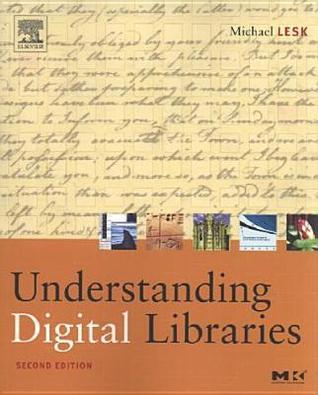What do you think?
Rate this book


"Lesk is the senior and most knowledgeable author in the field. His dry humor and clear explanations, combined with his uncanny ability to uncover and address key ideas and problems, make this a "must read."
Edward A. Fox, Ph.D., Professor of Computer Science, Virginia Tech
"Michael Lesk does for digital libraries what David Macaulay does for every day objects: he lucidly depicts how things work. In the digital world the ways things work is necessarily always in flux. In this second edition, Michael Lesk has done a masterful job of making us feel more at home with this flux."
Michèle Valerie Cloonan, Dean and Professor, Graduate School of Library & Information Science, Simmons College
"Lesk's insights are distilled from a lifetime of pioneering activities in information retrieval, text processing and digital libraries, culminating in a most creative period at the National Science Foundation. He has written a book that brings these insights alive with well-chosen examples: facts and figures, tables and graphs. Digital libraries have not replaced books. This book illustrates why."
William Y. Arms, Professor of Computer Science and Co-Director of Information Science, Cornell University
This fully revised and updated second edition of Understanding Digital Libraries focuses on the challenges faced by both librarians and computer scientists in a field that has been dramatically altered by the growth of the Web.
At every turn, the goal is practical: to show you how things you might need to do are already being done, or how they can be done. The first part of the book is devoted to technology and examines issues such as varying media requirements, indexing and classification, networks and distribution, and presentation. The second part of the book is concerned with the human contexts in which digital libraries function. Here you’ll find specific and useful information on usability, preservation, scientific applications, and thorny legal and economic questions.
Features:
• Useful for digital library projects in all kinds of settings, including commercial and community ventures, museums, research institutions, and schools.
• Covers the entire spectrum of media, including text, all kinds of images, audio, and video.
• Provides practical advice on achieving the best of what is possible while avoiding common pitfalls.
• Filled with case studies and references to valuable outside resources.
About the Author:
Michael Lesk is a professor in the School of Communication, Library and Information Studies at Rutgers University in New Brunswick, NJ. He previously directed the Information and Intelligent Systems Division at the National Science Foundation, overseeing the funding of the Digital Library Initiative's second round, and Bell Laboratories and the computer science research group at Bellcore (now Telcordia Technologies). He is best known for his work in electronic libraries, document production and retrieval software, computer networks, human interfaces, and computer languages. He is a Fellow of the ACM and recipient of the Flame award from USENIX.
456 pages, Paperback
First published December 2, 2004